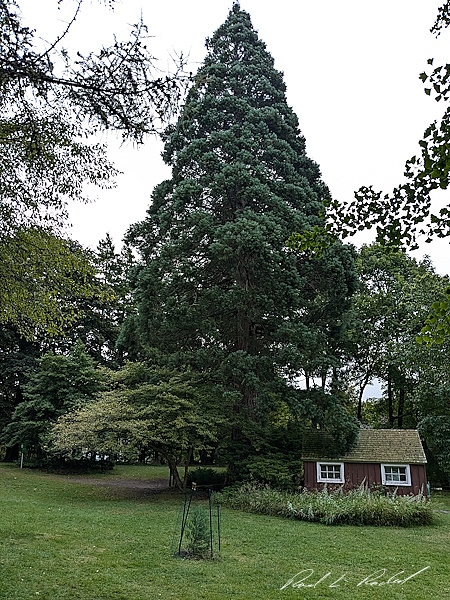Michigans' Giant Sequoia
There is a Giant Sequoia in Michigan, and you can visit it up close at Lake Bluff Farms in Manistee. Once known as Lake Bluff Bird Sanctuary, Lake Bluff Farms is comprised of 76 acres that were originally landscaped as an arboretum. In 1948, six sequoia trees were planted there, three remain. The Michigan Champion Sequoia, at 116 feet tall, is the biggest sequoia east of the Rocky Mountains. Giant Sequoia trees out west live up to the name. Some are as much as 300 feet tall with diameters in excess of 35 feet. These giants can have bark more than a foot thick that has helped some survive more than 3000 years. While the Michigan sequoia is only about half that size, it is still impressive, and it is still growing.

Among the other tree species flourishing here, there is also a
Champion Sycamore Maple. It is actually a maple with bark that
resembles a true sycamore. This species is native to Eastern Europe
and Southeast Asia. They are large, growing from 60 to 100 feet tall
and maturing in about 20 years. The sycamore maple is not just
decorative, it brings many benefits wherever it is planted.
Twenty-seven species of butterflies and moths feed on the leaves.
Caterpillars are an important food source for birds. This tree is
tough. It can tolerate wind, urban pollution, and salt spray. It has
been cultivated as far north as Iceland. You can even make honey
from the nectar produced by its flowers. On the other hand, the
Sycamore Maple has been declared an invasive species in Australia
and is prohibited or banned in Connecticut and Massachusetts. It has
a huge crown with a spread of 50 feet or more. This crown blocks the
sun which stifles plant growth while the sycamore maples seedlings
are shade tolerant.
In addition to Champion Trees, this nature preserve includes 1500
feet of Lake Michigan Shoreline and is a popular birding
destination. The trails and gardens are improved by numerous plaques
and signs explaining the different areas. A number of sites in the
sanctuary are designed for observing migratory birds that flock to
this area each year. Bald Eagles, shorebirds and migrating warblers
are seen along the trails. Since the sanctuary is on a major
migratory bird route it is home to the Migration Celebration among
other birding festivals.

